The study of plant cells is essential to understanding the fundamental building blocks of plants. Plant cells are eukaryotic cells that have a defined nucleus enclosed within a membrane. They possess unique features and organelles that enable them to carry out essential functions in plants. In this article, we will explore the structure, organelles, and characteristics of plant cells in detail.
An Introduction to Plant Cell
Plant cells are the basic structural and functional units of plants. Like animal cells, they are eukaryotic cells, meaning they have a true nucleus enclosed within a membrane. Plant cells, however, have several distinct features that set them apart from animal cells. One of the key differences is the presence of a cell wall outside the cell membrane in plant cells.
What is a Plant Cell?
A plant cell is a type of eukaryotic cell that is found in green plants. It is composed of various organelles that perform specific functions to maintain the normal functioning of the cell. These organelles are surrounded by a cell membrane, which acts as a protective barrier for the cell.
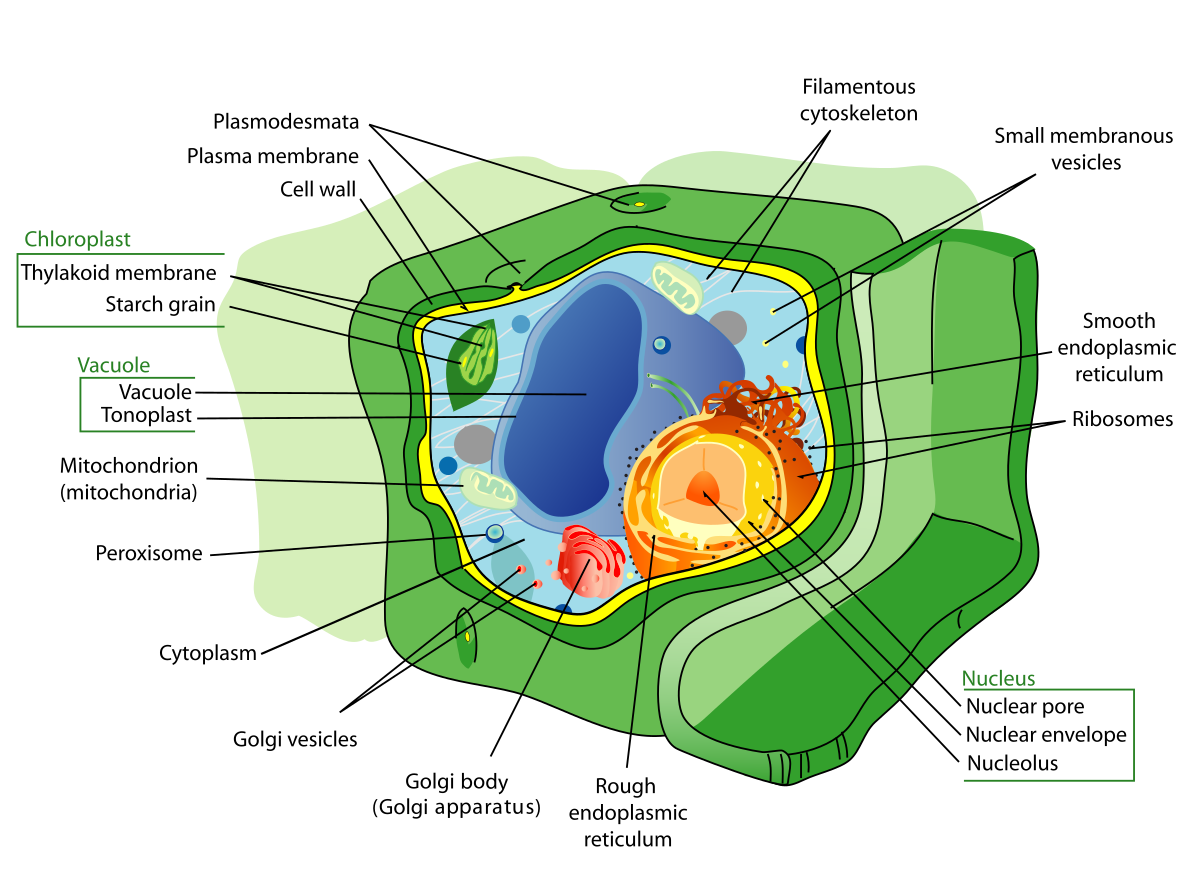
Plant Cell Diagram
To better understand the structure of a plant cell, let’s take a look at a diagram:
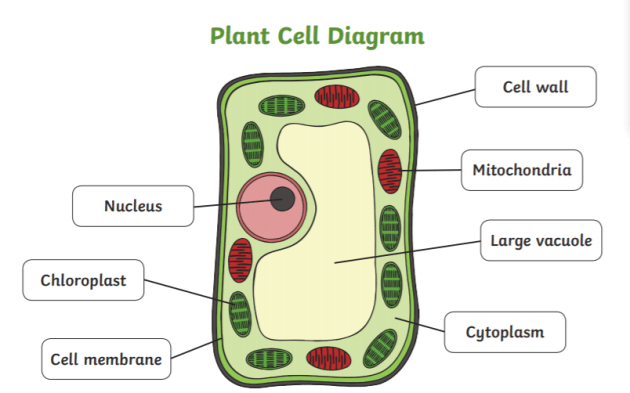
The diagram above provides an overview of the different organelles present in a plant cell. Each organelle has its own unique structure and function, which we will explore in more detail.
Plant Cell Structure: Organelles and Their Functions
Plant cells have various organelles that contribute to their structure and function. Let’s delve into the different organelles and their functions in a plant cell.
Cell Wall
The cell wall is a rigid layer located outside the cell membrane of plant cells. It is primarily composed of cellulose, hemicellulose, and pectin. The cell wall provides structural support and protection to the plant cell. It also regulates the entry and exit of molecules, helping to maintain the cell’s shape and integrity.
Mitochondria
Mitochondria are double-membraned organelles found in the cytoplasm of plant cells. They are often referred to as the “powerhouse of the cell” because they are responsible for generating energy through cellular respiration. Mitochondria break down carbohydrates and sugar molecules to produce adenosine triphosphate (ATP), the cell’s main source of energy.

Cell Membrane
The cell membrane, also known as the plasma membrane, is a thin, semi-permeable membrane that surrounds the plant cell. It consists of a phospholipid bilayer embedded with proteins and cholesterol. The cell membrane regulates the entry and exit of molecules, allowing nutrients to enter the cell while keeping harmful substances out.
Nucleus
The nucleus is a membrane-bound organelle that contains the cell’s genetic material, DNA. It is responsible for storing and protecting the DNA and plays a crucial role in cell division, growth, and metabolism. The nucleus also contains the nucleolus, which is involved in the production of ribosomes.
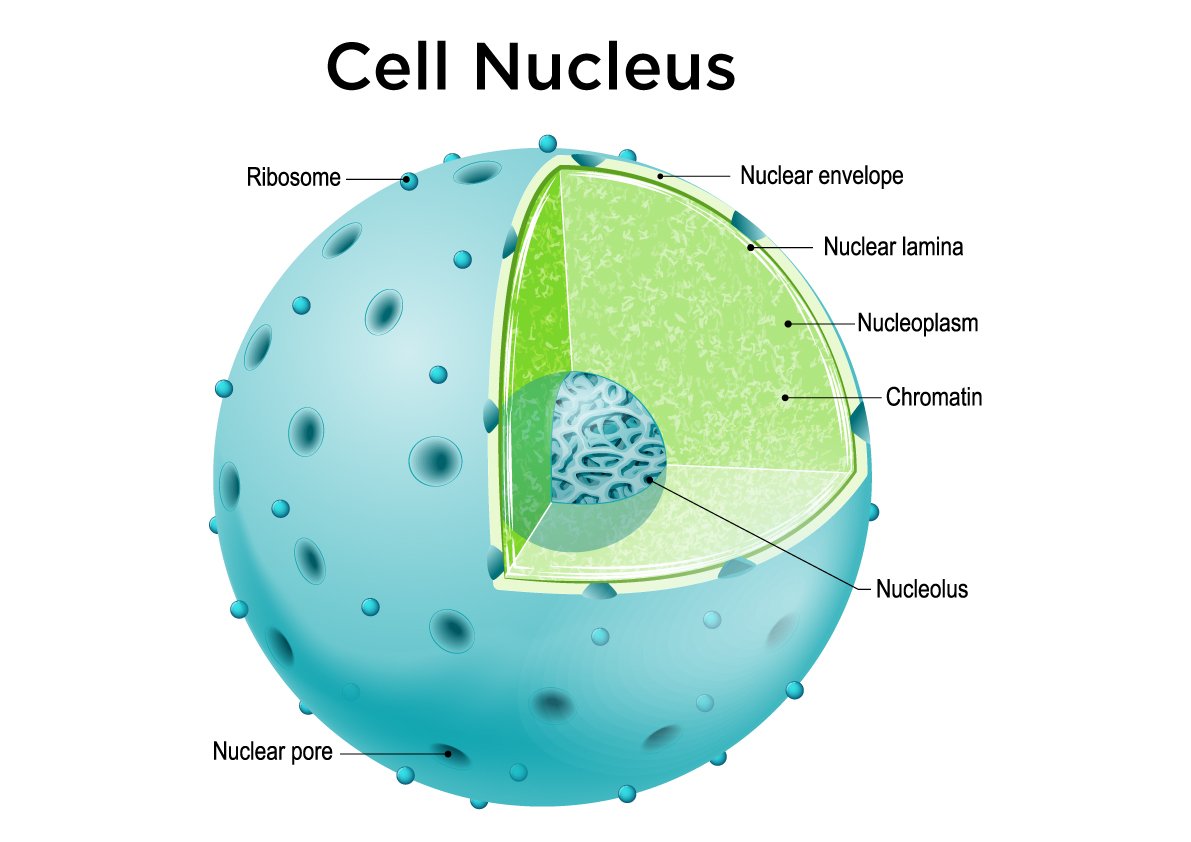
Plastids
Plastids are membrane-bound organelles found in plant cells. They have their own DNA and are involved in various cellular processes. There are several types of plastids, including:
- Chloroplasts: Chloroplasts are responsible for photosynthesis, the process by which plants convert sunlight into energy-rich molecules. They contain chlorophyll, a pigment that gives plants their green color.
- Chromoplasts: Chromoplasts contain pigments other than chlorophyll, such as red, orange, and yellow pigments. They give color to fruits, flowers, and other plant structures.
- Leucoplasts: Leucoplasts are non-pigmented plastids involved in the synthesis and storage of starch, lipids, and proteins.
Central Vacuole
The central vacuole is a large, fluid-filled organelle that occupies a significant portion of the plant cell’s volume. It is surrounded by a membrane called the tonoplast and contains a mixture of water, salts, enzymes, and other substances. The central vacuole helps maintain turgor pressure, stores nutrients and waste products, and provides structural support to the cell.
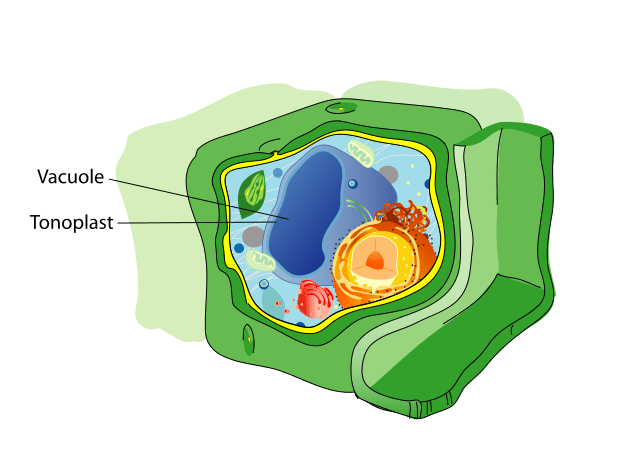
Golgi Apparatus
The Golgi apparatus is a stack of membrane-bound sacs involved in processing, packaging, and distributing molecules synthesized by the cell. It receives proteins and lipids from the endoplasmic reticulum, modifies them, and packages them into vesicles for transport to their final destinations within the cell or outside of it.

Ribosomes
Ribosomes are small, spherical organelles responsible for protein synthesis. They can be found either floating freely in the cytoplasm or attached to the endoplasmic reticulum. Ribosomes read the genetic instructions carried by messenger RNA and assemble amino acids into proteins.
Lysosome
Lysosomes are membrane-bound organelles that contain digestive enzymes. They break down waste materials, cellular debris, and foreign substances in the cell. While lysosomes are more commonly found in animal cells, plant cells also have similar functions carried out by their vacuoles.
Endoplasmic Reticulum (ER)
The endoplasmic reticulum is a network of membrane-enclosed tubules and sacs involved in the synthesis, folding, and modification of proteins and lipids. There are two types of ER: rough endoplasmic reticulum (RER), which is studded with ribosomes, and smooth endoplasmic reticulum (SER), which lacks ribosomes. RER is involved in protein synthesis, while SER is involved in lipid synthesis and detoxification.
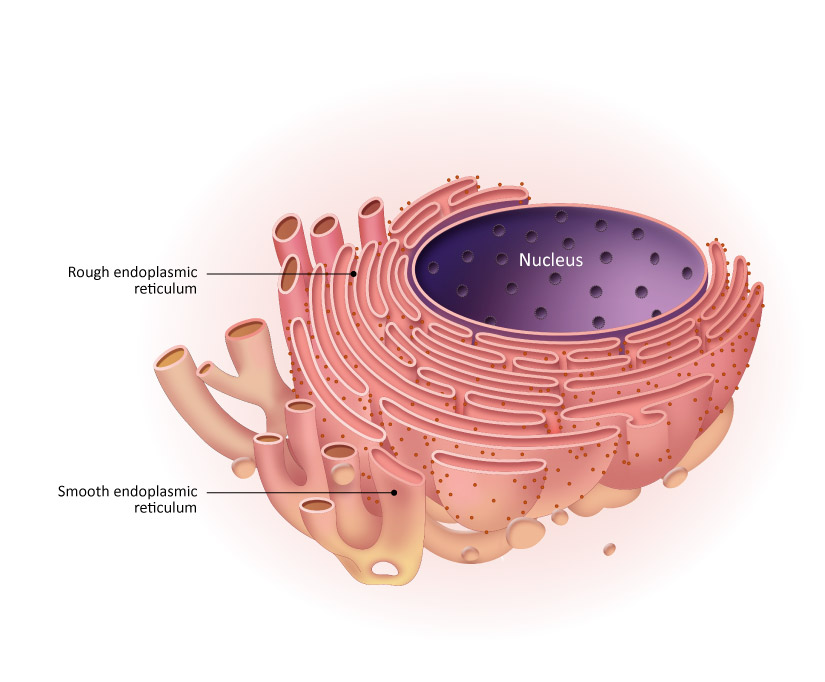
Peroxisomes
Peroxisomes are small, single-membrane-bound organelles that contain enzymes involved in various metabolic processes, including the breakdown of fatty acids and the detoxification of harmful substances. They play a crucial role in lipid metabolism and the production of reactive oxygen species.
Vacuoles
Vacuoles are membrane-bound sacs that store water, nutrients, and waste products in the plant cell. They can occupy a significant portion of the cell’s volume and provide structural support to the cell. Vacuoles also play a role in regulating osmotic pressure and maintaining cell turgor.
Cytoskeleton
The cytoskeleton is a network of protein filaments that provides structural support, maintains cell shape, and enables cell movement. It is composed of three types of filaments: microfilaments, intermediate filaments, and microtubules. Microfilaments are involved in cell contraction and movement, intermediate filaments provide mechanical support, and microtubules assist in cell division and intracellular transport.
Plasmodesmata
Plasmodesmata are microscopic channels that connect plant cells, allowing for the exchange of water, nutrients, and signaling molecules. They traverse the cell walls and connect the cytoplasm of adjacent cells, facilitating communication and coordination between cells.
Chloroplasts
Chloroplasts are double-membrane-bound organelles that contain chlorophyll, a pigment essential for photosynthesis. They are responsible for converting light energy into chemical energy and producing glucose, which is used as a source of energy for the plant cell.
Types of Plant Cells
Plant cells can be classified into several types based on their structure and function. Some of the common types of plant cells include:
- Parenchyma Cells: These cells are involved in photosynthesis, storage of nutrients, and gas exchange. They have thin cell walls and are often found in the leaves, stems, and roots of plants.
- Collenchyma Cells: Collenchyma cells provide support and flexibility to plant organs. They have thickened cell walls and are commonly found in young stems and leaves.
- Sclerenchyma Cells: Sclerenchyma cells are highly specialized cells that provide mechanical support to plants. They have thick, lignified cell walls and are often found in the stems, roots, and leaves of mature plants.
- Xylem Cells: Xylem cells are involved in the transport of water and minerals from the roots to the leaves of a plant. They have thick cell walls and form the vascular tissue of plants.
- Phloem Cells: Phloem cells are responsible for the transport of sugars and other organic molecules from the leaves to the rest of the plant. They form the other part of the vascular tissue.
Types of Plant Tissues
Plant tissues are groups of cells that work together to perform specific functions. There are four main types of plant tissues:
- Dermal Tissue: Dermal tissue covers the outer surface of plants and helps protect them from physical damage and water loss.
- Vascular Tissue: Vascular tissue consists of xylem and phloem and is responsible for the transport of water, nutrients, and sugars throughout the plant.
- Ground Tissue: Ground tissue is involved in photosynthesis, storage, and support. It makes up the bulk of the plant and includes parenchyma, collenchyma, and sclerenchyma cells.
- Meristematic Tissue: Meristematic tissue is responsible for plant growth and development. It is located at the tips of roots and shoots and is involved in cell division and differentiation.
Plant Cell Size and Shape
Plant cells vary in size and shape depending on their function and location within the plant. Most plant cells range in size from 10 to 100 micrometers in diameter. Some plant cells, such as guard cells, are specialized in shape to perform specific functions, such as regulating the opening and closing of stomata.
Plant Cells vs. Animal Cells: Difference Between Cells
Plant cells and animal cells share many similarities, but they also have several key differences. One of the main differences is the presence of a cell wall in plant cells, which provides structural support and protection. Animal cells do not have a cell wall.
Another difference is the presence of plastids, such as chloroplasts, in plant cells. Plastids are responsible for photosynthesis and the storage of starch. Animal cells do not have plastids.
Plant cells also tend to be larger and more rigid in structure compared to animal cells. Animal cells are often more flexible and can change shape more easily.
| Characteristic | Plant Cells | Animal Cells |
|---|---|---|
| Cell Wall | Present, made of cellulose | Absent |
| Cell Membrane | Present | Present |
| Nucleus | Present | Present |
| Cytoplasm | Present | Present |
| Mitochondria | Present | Present |
| Chloroplasts | Present (contain chlorophyll) | Absent |
| Vacuole | Large central vacuole | Small or absent vacuole |
| Centrioles | Absent | Present (in most animal cells) |
| Shape | Generally rigid and rectangular | Flexible and round or irregular |
| Lysosomes | Rarely present | Common |
| Flagella/Cilia | Flagella (few) and Cilia (absent) | Flagella and/or Cilia (common) |
| Storage of Energy | Starch (in chloroplasts) | Glycogen |
| Function | Photosynthesis | Varied, including movement and sensing |
| Examples | Plant cells in leaves, stems, roots | Animal cells in muscle, nerve, skin |
Plant Cell vs. Fungal Cell: Difference Between Cells
While plant cells and fungal cells share some similarities, there are also several differences between them. One of the main differences is the presence of a cell wall. Plant cells have a cell wall composed of cellulose, while fungal cells have a cell wall composed of chitin.
Another difference is the presence of chloroplasts in plant cells, which are responsible for photosynthesis. Fungal cells do not have chloroplasts.
Fungal cells also have unique organelles called mitochondria, which are responsible for generating energy through cellular respiration. Plant cells also have mitochondria, but they are more closely related to the mitochondria found in animal cells.
| Characteristic | Plant Cells | Fungal Cells |
|---|---|---|
| Cell Wall | Present, made of cellulose | Present, made of chitin |
| Cell Membrane | Present | Present |
| Nucleus | Present | Present |
| Cytoplasm | Present | Present |
| Mitochondria | Present | Present |
| Chloroplasts | Present (contain chlorophyll) | Absent (some fungi have photosynthetic structures) |
| Vacuole | Large central vacuole | Smaller vacuoles |
| Cell Type | Eukaryotic | Eukaryotic |
| Cellular Organization | Tissues and organs | Mycelium (network of thread-like structures) |
| Mode of Nutrition | Autotrophic (photosynthesis) | Heterotrophic (absorptive) |
| Reproduction | Sexual and asexual reproduction | Primarily asexual reproduction through spores |
| Symbiotic Relationships | Often involved in symbiotic relationships with other organisms (e.g., mycorrhizal associations) | Frequently involved in symbiotic relationships (e.g., mycorrhizae) |
| Examples | Plant cells in leaves, stems, roots | Fungal cells in mycelium, yeast cells, spores |
Plant Cell vs. Bacterial Cell: Difference Between Cells
Plant cells and bacterial cells are vastly different from each other. Bacterial cells are prokaryotic cells, meaning they do not have a defined nucleus or membrane-bound organelles. Plant cells, on the other hand, are eukaryotic cells with a true nucleus and membrane-bound organelles.
Bacterial cells also have a cell wall, but it is composed of peptidoglycan, a different material than the cellulose found in plant cell walls. Bacterial cells can have flagella for movement, while plant cells do not have this structure.
Additionally, bacterial cells can be much smaller than plant cells, ranging in size from 1 to 10 micrometers. Plant cells are generally larger, ranging from 10 to 100 micrometers in diameter.
| Characteristic | Plant Cells | Bacterial Cells |
|---|---|---|
| Cell Type | Eukaryotic | Prokaryotic |
| Cell Wall | Present, made of cellulose | Present, made of peptidoglycan |
| Cell Membrane | Present | Present |
| Nucleus | Present | Absent (nucleoid region instead) |
| Cytoplasm | Present | Present |
| Membrane-bound Organelles | Present (e.g., chloroplasts, mitochondria) | Absent |
| DNA Structure | Linear chromosomes within the nucleus | Circular chromosomes in the nucleoid |
| Reproduction | Sexual and asexual reproduction | Mostly asexual reproduction (binary fission) |
| Flagella | Present in some cells for movement | Flagella for movement |
| Photosynthesis | Present in chloroplasts | Absent (some bacteria perform photosynthesis) |
| Mode of Nutrition | Autotrophic (photosynthesis) | Heterotrophic or autotrophic (depending on the bacterium) |
| Size | Generally larger | Generally smaller |
| Examples | Plant cells in leaves, stems, roots | Bacterial cells such as Escherichia coli, Bacillus subtilis |
How Does the Plant Cell Work?
Plant cells are involved in various processes that are essential for the growth, development, and survival of plants. One of the main functions of plant cells is photosynthesis, the process by which plants convert sunlight into energy-rich molecules. This process occurs in the chloroplasts, where chlorophyll captures light energy and uses it to produce glucose.
Plant cells also play a role in the transport of water and nutrients from the roots to the rest of the plant. This is facilitated by the xylem and phloem, which are part of the plant’s vascular system.
Additionally, plant cells are involved in the production and storage of various molecules, such as starch, proteins, and lipids. They also play a role in cell division and growth.
Characteristics of Plant Cell
Plant cells are characterized by several key features that distinguish them from other types of cells. Some of these characteristics include:
- Presence of a cell wall composed of cellulose
- Presence of chloroplasts responsible for photosynthesis
- Large central vacuole for storage and turgor pressure
- Eukaryotic structure with a true nucleus and membrane-bound organelles
These characteristics allow plant cells to carry out essential functions in plants and contribute to their growth and survival.
How Kunduz Can Help You Learn Plant Cells?
At Kunduz, we understand the importance of a solid foundation in biology, including the study of plant cells. Our comprehensive learning materials, including interactive diagrams, step-by-step tutorials, and engaging videos, can help you grasp the intricate details of plant cell structure and function. Whether you’re a student studying for an exam or a curious learner exploring the wonders of the natural world, Kunduz is here to support your learning journey.
Start exploring our biology resources today and unlock the secrets of plant cells!
